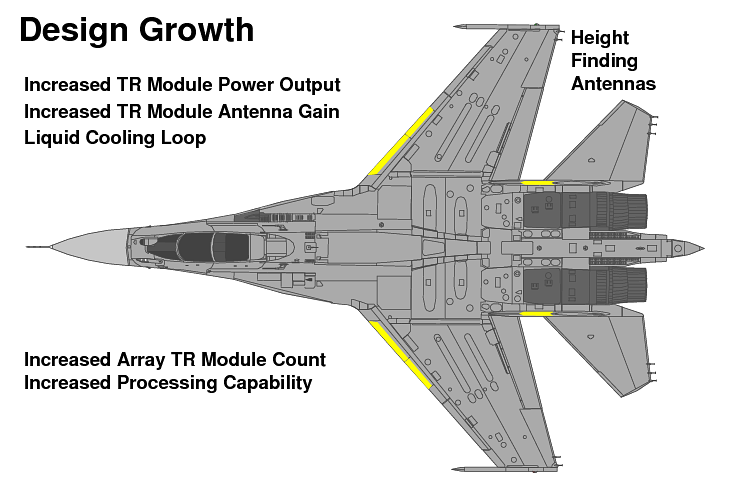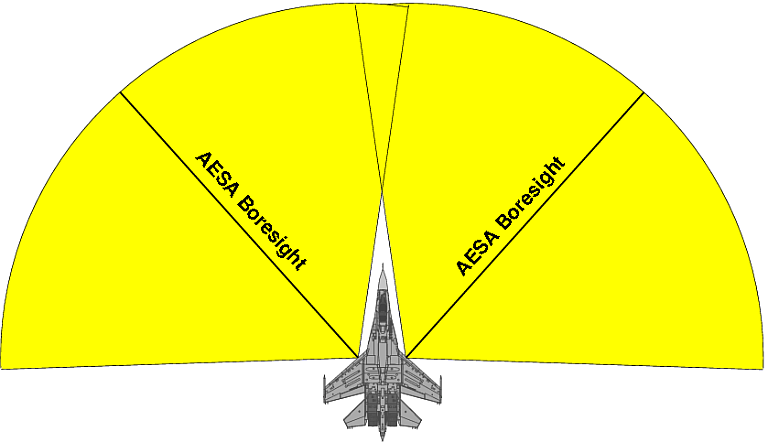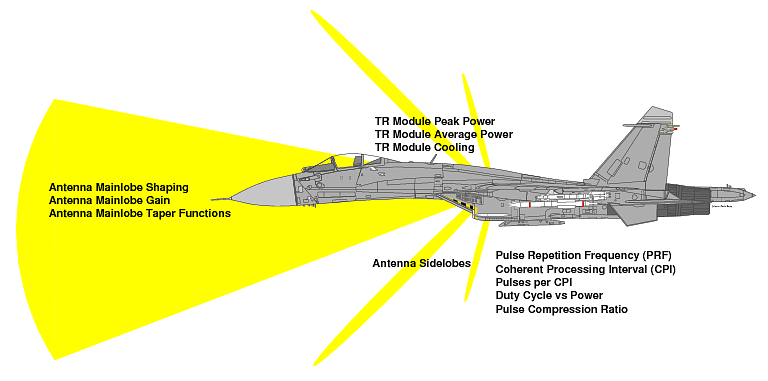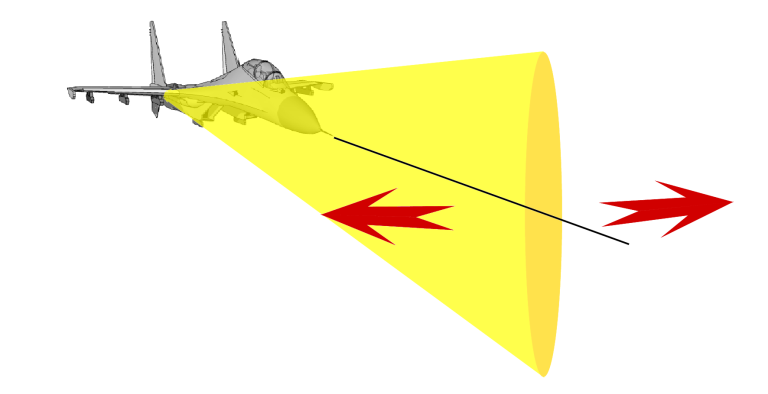284KN for both engines.... I first wrote dry thrust for two engines combined, so it is logical that written afterburner thrust is for both engines - combined.. wrote:
Oh ok yeah that is true. My bad..

 Re: Su-57 Stealth Fighter: News #8
Re: Su-57 Stealth Fighter: News #8284KN for both engines.... I first wrote dry thrust for two engines combined, so it is logical that written afterburner thrust is for both engines - combined.. wrote:
GarryB likes this post

 Re: Su-57 Stealth Fighter: News #8
Re: Su-57 Stealth Fighter: News #8In fact I would say a modern Su-35 or upgraded Su-30 with L band radar and modern AESA radar in its nose together with an IADS should be able to pick apart any stealth fighter force as long as they have modern AAMs and can also use their sensors and datalinks to find targets for long range ground launched missiles like S-350 and S-400... and I think the Su-33 and MiG-29K could do the same at sea making them rather more powerful than their numbers would indicate otherwise. wrote:

 Re: Su-57 Stealth Fighter: News #8
Re: Su-57 Stealth Fighter: News #8Unless you mean using a small short range L band radar for missile approaches.. L band on the Su35 would have to be at least 3x as large the X band N035 on the Su35 to achieve similar resolution.. wrote:
 Re: Su-57 Stealth Fighter: News #8
Re: Su-57 Stealth Fighter: News #8
 Re: Su-57 Stealth Fighter: News #8
Re: Su-57 Stealth Fighter: News #8Arrow wrote:
So why use L-band radars on the wings of the Su 57?
GarryB, JPJ, zardof, Gomig-21 and Mir like this post

 Re: Su-57 Stealth Fighter: News #8
Re: Su-57 Stealth Fighter: News #8Atmosphere wrote:Anyone still got the links to the PAK-FA patents?
Especially the one with the aerodynamic features.
Thanks.
GarryB, lancelot and TMA1 like this post

 Re: Su-57 Stealth Fighter: News #8
Re: Su-57 Stealth Fighter: News #8So why use L-band radars on the wings of the Su 57? wrote:
TMA1 likes this post

 Re: Su-57 Stealth Fighter: News #8
Re: Su-57 Stealth Fighter: News #8Mainly MAWS and IFF.. wrote:
 Re: Su-57 Stealth Fighter: News #8
Re: Su-57 Stealth Fighter: News #8Arrow wrote:
So what some people wrote here, that this L-band radar is used to detect stealth, is nonsense. This means that the Su-57 has the same limitations as other aircraft when it comes to stealth detection. X-band radar that stealth suppresses the most.
Gomig-21 and lancelot like this post
 Re: Su-57 Stealth Fighter: News #8
Re: Su-57 Stealth Fighter: News #8GarryB likes this post
 Re: Su-57 Stealth Fighter: News #8
Re: Su-57 Stealth Fighter: News #8Some people think the L-band radar is able to detect the rough location of a stealth aircraft, and then the X-band radar can use that rough location to guide a concentrated set of beams towards that area to accurately detect the target and guide a missile against it. This is suspected to be used in the Su-35 for example.Mir wrote:I believe L-band is capable of detecting stealth aircraft but it's not able to pin-point.
Gomig-21 and Mir like this post
 Re: Su-57 Stealth Fighter: News #8
Re: Su-57 Stealth Fighter: News #8This is unlikely to happen and if it does it wouldn't be very useful.
The Mig31 is really the only fighter jet/interceptor in the world that can operate L Band radars in a resolution similar to the X band radars of the average jet because its PESA radar is HUGE!!..
So why use L-band radars on the wings of the Su 57?
Mainly MAWS and IFF..
So what some people wrote here, that this L-band radar is used to detect stealth, is nonsense. This means that the Su-57 has the same limitations as other aircraft when it comes to stealth detection. X-band radar that stealth suppresses the most.
Search, track and missile midcourse guidance against low signature aircraft.
I believe L-band is capable of detecting stealth aircraft but it's not able to pin-point.
Some people think the L-band radar is able to detect the rough location of a stealth aircraft,
and then the X-band radar can use that rough location to guide a concentrated set of beams towards that area to accurately detect the target and guide a missile against it.
Gomig-21 likes this post
 Re: Su-57 Stealth Fighter: News #8
Re: Su-57 Stealth Fighter: News #8Belisarius wrote:Atmosphere wrote:Anyone still got the links to the PAK-FA patents?
Especially the one with the aerodynamic features.
Thanks.
http://www.su57.mariwoj.pl/su57-index.html
Links to all Su-57 patents are at the bottom of the page.

 Re: Su-57 Stealth Fighter: News #8
Re: Su-57 Stealth Fighter: News #8I believe L-band is capable of detecting stealth aircraft but it's not able to pin-point. wrote:

 Re: Su-57 Stealth Fighter: News #8
Re: Su-57 Stealth Fighter: News #8They have already decided to do it to unify the parts and components between teh Su-30 and Su-35... the Su-30 essentially becomes a two seat Su-35 with all the same bits and pieces.... radar, engines, etc etc. Simplifies training and logistics and support. wrote:

 Re: Su-57 Stealth Fighter: News #8
Re: Su-57 Stealth Fighter: News #8So what some people wrote here, that this L-band radar is used to detect stealth, is nonsense. This means that the Su-57 has the same limitations as other aircraft when it comes to stealth detection. X-band radar that stealth suppresses the most. wrote:

 Re: Su-57 Stealth Fighter: News #8
Re: Su-57 Stealth Fighter: News #8and then the X-band radar can use that rough location to guide a concentrated set of beams towards that area to accurately detect the target and guide a missile against it. wrote:
 Re: Su-57 Stealth Fighter: News #8
Re: Su-57 Stealth Fighter: News #8It can pin point the location of a low observable object if its large enough..
To get the same accuracy as a 2m diameter X Band radar, You would need it 6m large.
Then it will track and search exactly like an X band radar with more range however. But it will need more power because of that wavelength..
One of the reasons why It is not particularly employed as a frequency band in the radar of a fighter jet (Fighter jet radars are already multi-band btw, they dont operate from 1 band only) is because of the size of the thing...


They are not doing a L Band radar for the main search and track radar.. It is gonna have terrible resolution..
I dont know if you have played around with CST Suite or ANSYS HFSS but shaping that lobe is not easy..
Most of the best beam shaping is through trial and error and not some straight forward mathematical formula like Electronic beam steering.
Hole likes this post

 Re: Su-57 Stealth Fighter: News #8
Re: Su-57 Stealth Fighter: News #8You are not understanding... radar cross section has nothing to do with the actual size of something... it is an indication of how reflective that something is. wrote:

 Re: Su-57 Stealth Fighter: News #8
Re: Su-57 Stealth Fighter: News #8
 Re: Su-57 Stealth Fighter: News #8
Re: Su-57 Stealth Fighter: News #8Finding stealth aircraft with an L band does not need extra power because the wavelength is too long to be redirected by the stealth shaping of the target so the entire beam sent to the target is returned to the radar antenna. At Ku or Ka band much of the energy is redirected away from the source radar so more power is needed to detect a stealth target, but with L band there is no degrading of range. wrote:
 Re: Su-57 Stealth Fighter: News #8
Re: Su-57 Stealth Fighter: News #8GarryB wrote:
The Su-35 and Su-30 and Su-57 use a linear array... a single line of elements in a mounting system that fits into the leading edge of the wing.
The wing is not fixed and can be moved up and down so presumably it will be moved during a scan to look for stealthy targets (that don't appear on the main nose mounted Ka/Ku band AESA). The L band radar can't track targets but it detects targets which allows IRST and nose mounted radars to find out where to look without having a scan of the entire airspace which would light up like a lighthouse. Given precise coordinates of the reflecting stealth target the Ku band AESA can focus its full power at the target to get further information through sheer brute force.
So why use L-band radars on the wings of the Su 57?
The L band AESA in the wings of the Russian aircraft have huge elements because of the frequency they operate at so it is a single line of elements in a row along the wing that is used to send a signal. It can scan vertically by moving the surface it is mounted in... imagine having a vertical line of torches that you can manually scan horizontally looking for car reflectors in the dark... you will get hits but it is not practical for tracking... the the locational data is enough to allow you to find stealth targets and direct other sensors towards them. It is radar too so you get range and location information.







franco, zardof and Mir like this post

 Re: Su-57 Stealth Fighter: News #8
Re: Su-57 Stealth Fighter: News #8
 But at least the AL51 is looking great.
But at least the AL51 is looking great.sepheronx, mack8, kvs, lancelot, TMA1 and Belisarius like this post
 Re: Su-57 Stealth Fighter: News #8
Re: Su-57 Stealth Fighter: News #8I meant the radar. Not the object. To get a narrower beam out of a low frequency radar you need a larger antenna physically.
IF you dont do this then SAR is the next way to do it.. Triangulate the target with multiple arrays pointing at it and averaging their results (Much harder to do in real life).
How close depends on the frequency band. L band isn't that bad though.. 10m should be the max. But its still bad.. For stealth aircraft with RAM and Frequency selective surfaces, Absorption Cross sections should be considered.. All Frequencies reflect the same but don't get absorbed the same.
The far left is what a small fighter jet sized L Band beam pattern would look like. Thats what you dont want.
Well bye bye 3D nozzle. I will miss it..cry But at least the AL51 is looking great.
zardof, Hole and Belisarius like this post
 Re: Su-57 Stealth Fighter: News #8
Re: Su-57 Stealth Fighter: News #8